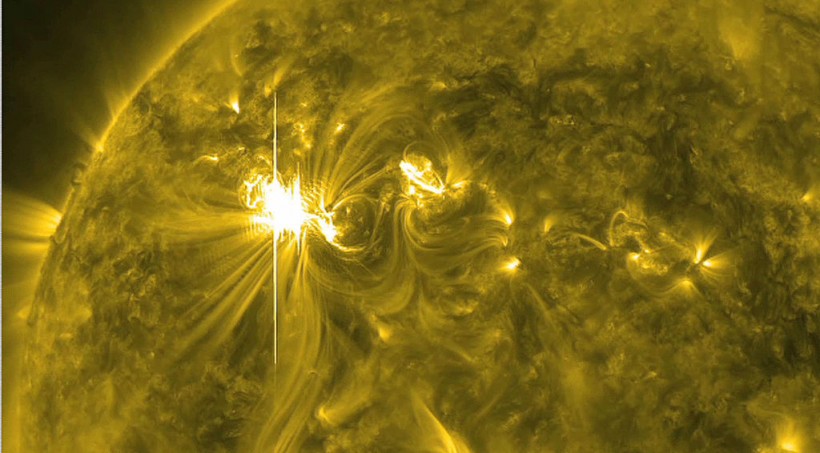Solar flares, these massive bursts of energy from the Sun, are both fascinating and potentially dangerous to our planet.
Learning about these solar events and their profound impact on Earth is critical for understanding the Sun's impact on our daily lives.

IN SPACE - MARCH 6: In this handout from NASA/Solar Dynamics Observatory (SDO), a X5.4 solar flare, the largest in five years, erupts from the sun's surface March 6, 2012. According to reports, particles from the flare are suppose to reach earth early March 7, possibly disrupting technology such as GPS system, satellite networks and airline flights.
What are Solar Flares?
Solar flares, as described by StarDate, are explosions resulting from the sudden release of magnetic energy stored in the Sun's atmosphere.
These eruptions emit radiation across the electromagnetic spectrum, from radio waves to X-rays and gamma rays. Classified based on their brightness in X-ray wavelengths, these flares range from the mild A, B, and C classes to the powerful M and X-class flares.
The most intense X-class flares or X flares possess energy equivalent to a billion hydrogen bombs, causing significant disruptions to our technology and communications.
Understanding Solar Flares
ESA, the European Space Agency, simplifies the complex mechanism behind solar flares.
They occur when stored magnetic energy within 'twisted' magnetic fields-often above sunspots-suddenly discharges, heating materials to millions of degrees within minutes.
These bursts of energy progress through three stages: precursor, impulsive, and decay. During these stages, different forms of radiation, including soft x-rays, radio waves, and gamma rays, are emitted, and temperatures in the corona, the Sun's outer atmosphere, can spike to tens of millions of degrees Kelvin.
Read Also: NASA, IBM Forge Next-Gen AI Weather Model, Advanced Climate Forecast Technology
Solar Flares and the Sun's Activity Cycle
NASA notes a correlation between solar flare frequency and the Sun's eleven-year activity cycle. As the Sun reaches its peak activity phase, known as solar maximum, the frequency of flares increases.
These eruptions predominantly occur in active regions of the Sun, distinguished by strong magnetic fields and sunspots.
Solar Flares Effects on Earth
Solar flares have a wide range of effects on Earth. Direct impacts include ionosphere and radio communications disturbances, while energetic particles released into space can disrupt technology and endanger astronauts and high-altitude passengers.
Furthermore, the relationship between solar flares and coronal mass ejections (CMEs) highlights the significance of understanding both phenomena. CMEs, while not always associated with flares, can cause geomagnetic storms that interfere with electrical grids and communication satellites.
Observing and Studying Solar Flares
Detecting solar flares necessitates specialized instruments due to the Sun's brightness, as cautioned by NASA. Various emissions from flares are observable using telescopes on Earth, while more energetic emissions like x-rays and gamma rays require space-based telescopes.
Understanding these powerful solar eruptions is not just about being intrigued by celestial events; it is also about protecting our technology and comprehending the forces that shape our existence.
Stay posted here at Tech Times.
Related Article: US Back to the Moon: Astrobotic's Peregrine Lander to Make History with Moon Landing Attempt on Jan. 25









